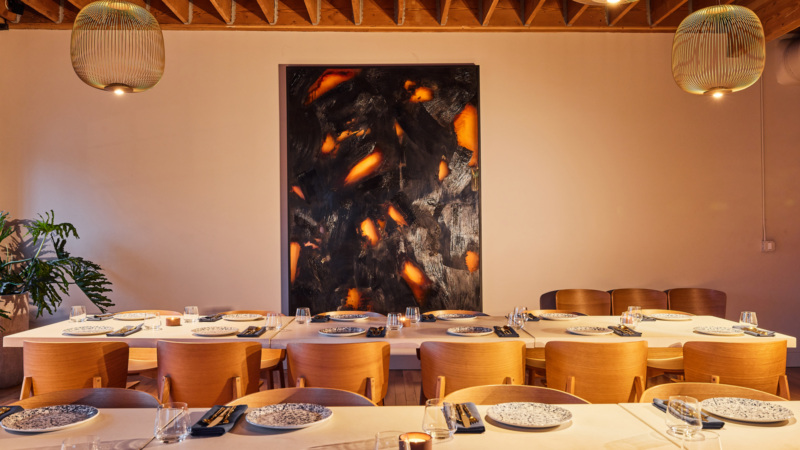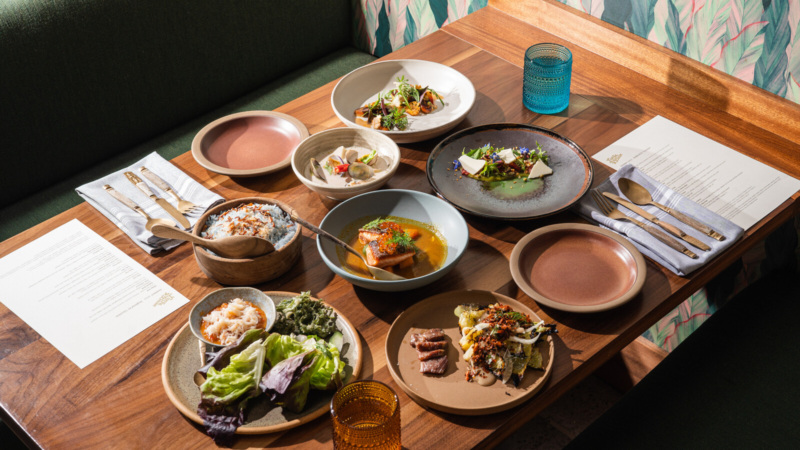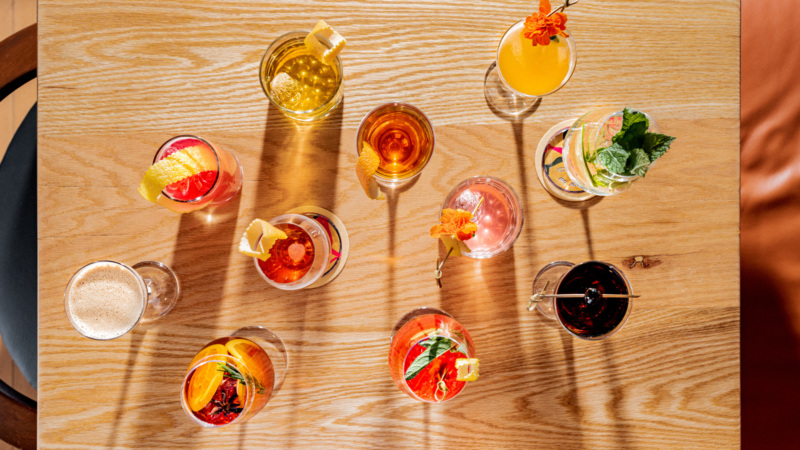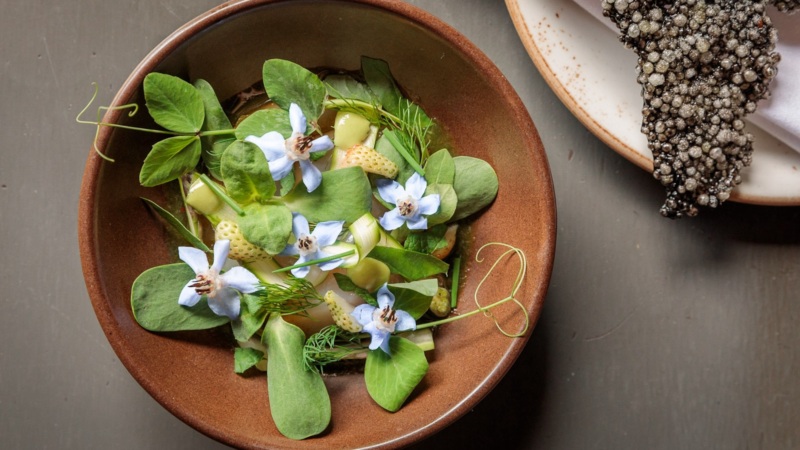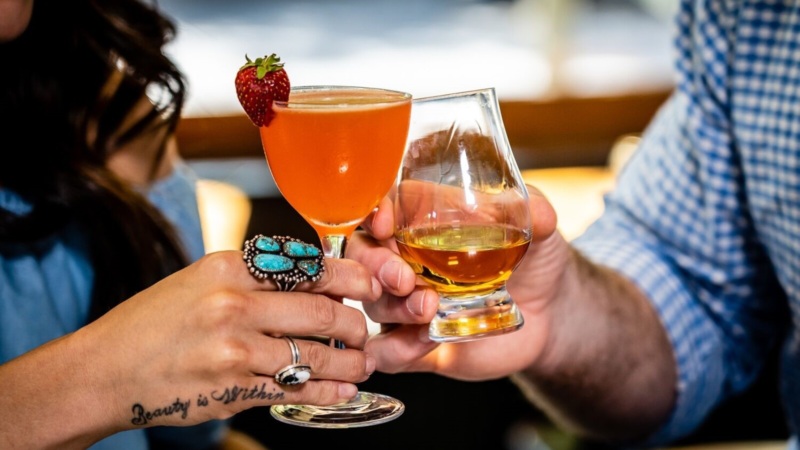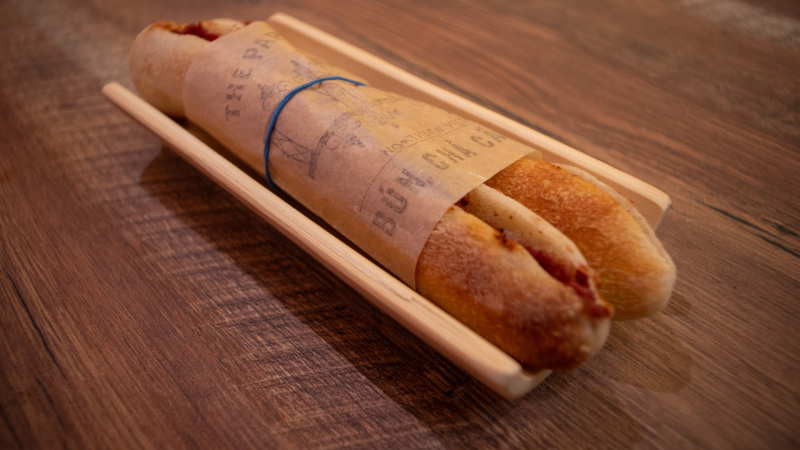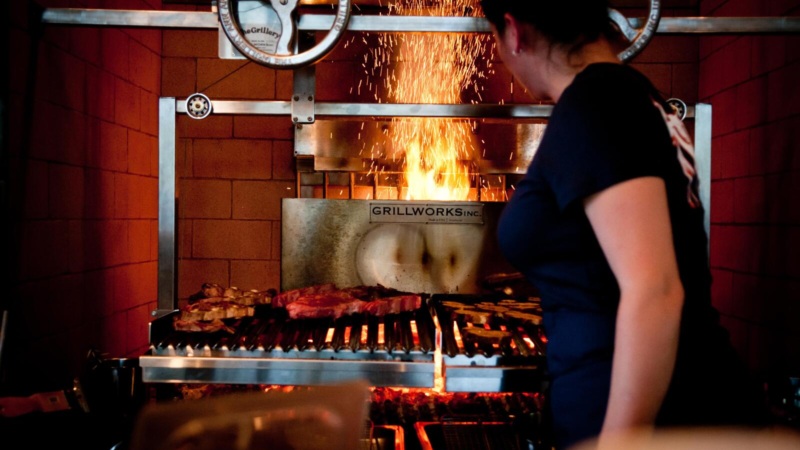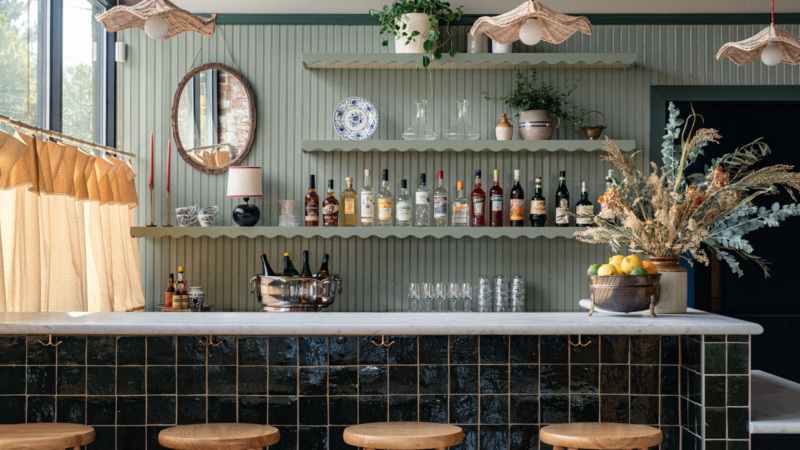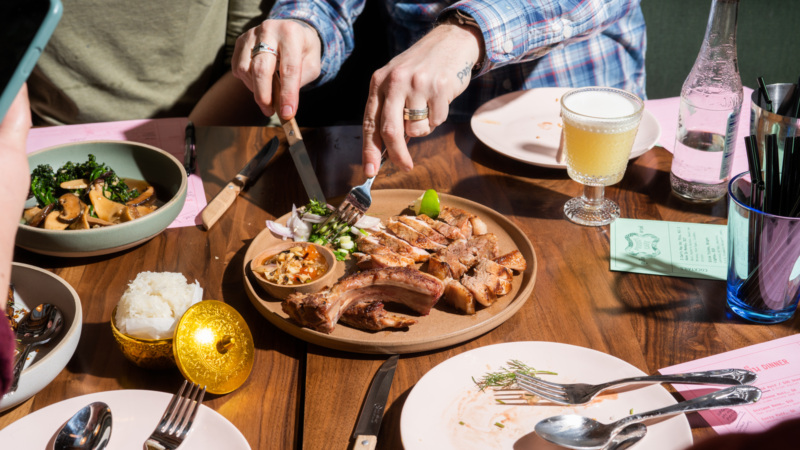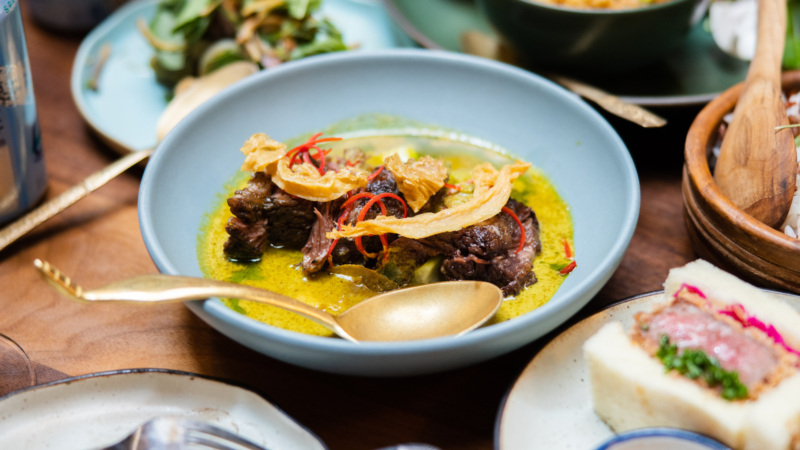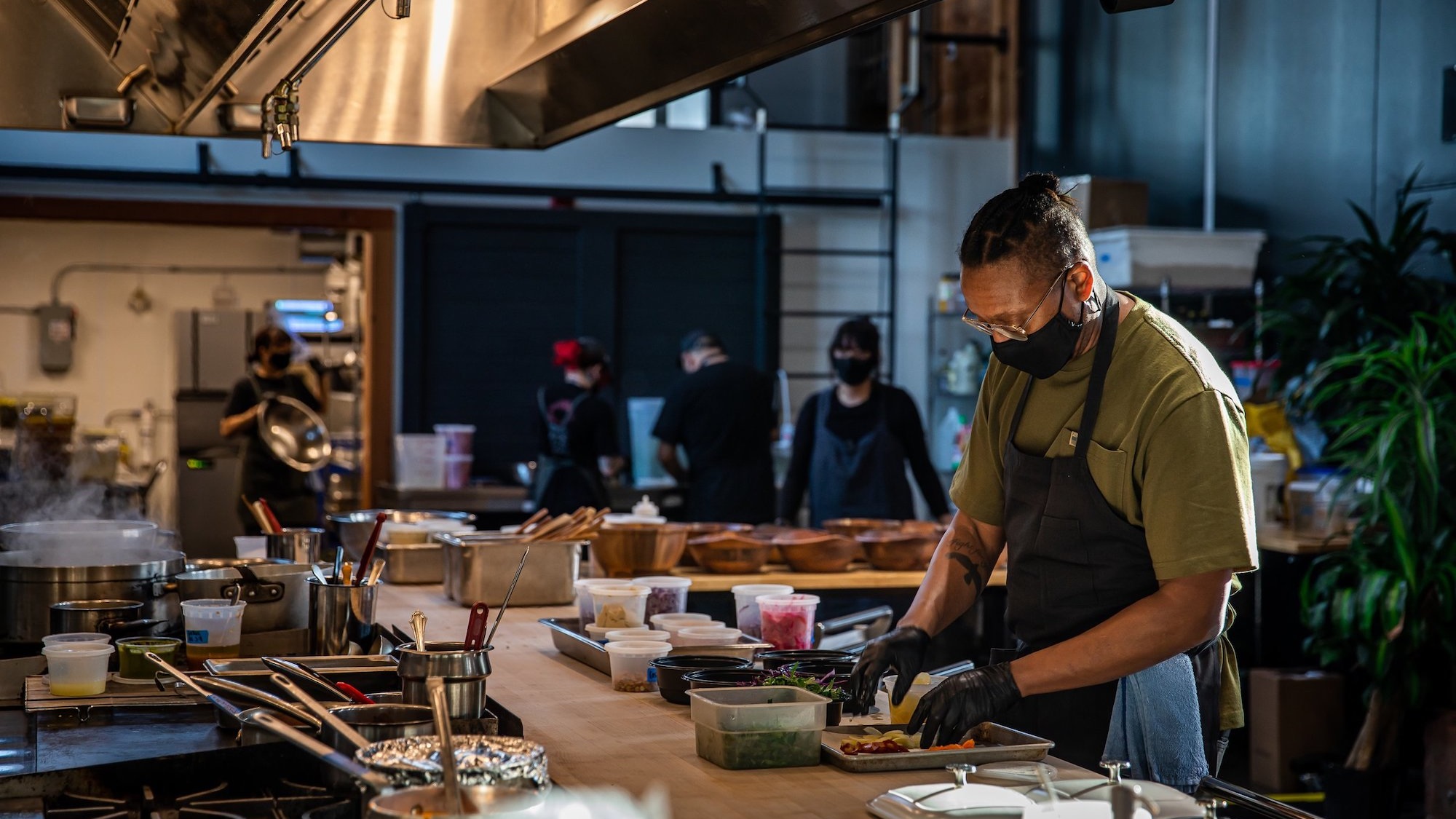
With Kann, Gregory Gourdet Is Ready to Define Dining His Way
Take a scroll through Gregory Gourdet’s Instagram, and it’ll seem as though the celebrity chef is everywhere, all at once. From Portland to Miami, Chicago to Tucson, he is never not on the move. When Gourdet and I find a time to chat, virtually, his easy demeanor belies more hectic days, shuttling around the country for endless hours of press, filming, and cooking elaborate dinners for Oprah.
Gourdet has been in the national spotlight for at least eight years, including competing in two seasons of “Top Chef,” and is well on his way to becoming a household name. But this spring and summer, he has been laser focused on opening his first solo restaurant, Kann, in Portland, Ore. — an opening that has taken on a nearly overwhelming momentum, with reservations vanishing almost before they appeared.
This 80-seat restaurant in Portland’s Buckman neighborhood is an homage to Gourdet’s Haitian heritage, his love for Southeast Asian flavors, and the bounty of the Pacific Northwest. But more than that, it’s a culmination of Gourdet’s extraordinary personal and professional story to date. And it is poised to become one of those destination restaurants that enjoys national visibility. “This restaurant taps into everything I’ve ever learned, everything I’ve been influenced by, the things I love that inspire me daily,” Gourdet says.
The road leading to this moment has been long and arduous. Gourdet started out as many young, ambitious chefs are taught to do — with French culinary training and the punishing grind of a brigade-style fine dining kitchen. His first job after graduating from the Culinary Institute of America was working for Jean-Georges Vongerichten. This was in the early 2000s, when French fine dining in New York was reaching its nouveau peak (as seen in Vongerichten’s French-Asian fusion style). After nearly 10 years of work in the city, including several running 66, Vongerichten’s take on a modern Chinese restaurant, Gourdet relocated to Portland, and took on the role of executive chef at Departure, a trendy downtown hotel restaurant.

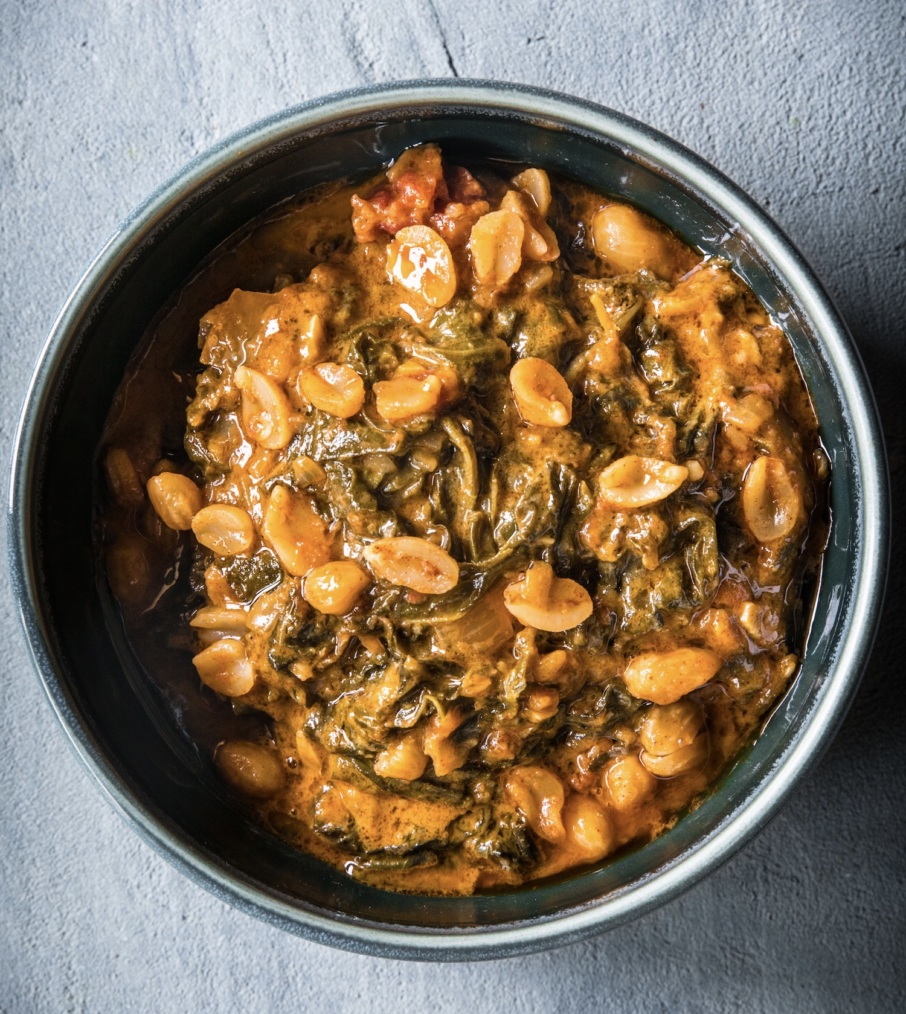
In contrast to the volatility of restaurant life in New York, Gourdet found stability in Portland, and this shaped the second half of his career. As his platform grew, he began opening up about his history of addiction — and has emerged as a model for sobriety in a notoriously toxic and enabling industry. He similarly found a role as an advocate for his own marginalized communities, whether for Black people and other people of color or the LGBTQ+ community. He is famously vocal about eating healthily without sacrificing that feeling of indulgence.
This openness and advocacy are enough to make an impression, but Gourdet also has a rare charisma, of the sort TV adores. His first TV appearance was in 2011, on the Food Network show “Extreme Chef.” We’ve been graced with his quietly coy demeanor ever since. In June, Gourdet and another “Top Chef” alum, Mei Lin, competed on the Netflix reboot of the iconic cooking competition, “Iron Chef.” But his accolades are as lengthy as his burgeoning IMDB profile: Eater Portland’s Chef of the Year award, James Beard Foundation nominee, and most recently, winner of a Beard media award for his cookbook, “Everyone’s Table.”
In the opening essay of the book, titled “A Recipe for Change,” Gourdet is no less candid than he is elsewhere. He intimates with great self-awareness the risk of his choices at the height of his addiction. “At the end was elation,” he writes, “but below were flames and failure in the kitchen and death in the bottle or bag.”
The path to opening Kann has been more than three years in the making. In 2019, Gourdet left his executive chef position at Departure, intending to open his own place. The pandemic, of course, cut that plan short. A series of winter pop-ups, sponsored by American Express, was the first step in readying the concept for the public. Now, Gourdet and his team have put the finishing touches on the restaurant and subterranean Caribbean-inspired bar, Sousòl. The custom 8-foot Del Fuego Ironworks hearth that forms the heartbeat of the restaurant, is finally ready for action.
This interview has been lightly edited for length and clarity.
RESY: You introduced Kann to the world back in 2020, on your season of “Top Chef All Stars.” Fast forward through two very eventful years, numerous delays, and here you are, with diners finally showing up. How are you feeling?
Gregory Gourdet: There are definitely a lot of emotions. Everyone is just going full steam ahead. I have to admit, there’s a little bit of anxious energy surrounding everything. This is a very personal project. It’s something that’s been in my head and my heart for the past few years. And it’s weird because … once we open, a whole new chapter begins. It’s like this birthing process. I’m just super excited to have everything up and running and to be serving guests.
What led you to this point? Why did you want to open your own restaurant?
As you get older, you think about what you want to accomplish and what food means to you. I’ve worked in so many different types of restaurants throughout my career. I went to French culinary school, I worked in Asian restaurants for a long time, I worked in Spanish restaurants, American restaurants. I’ve done lots of different cuisines. But when I started cooking Haitian food, I felt a personal connection. I think it’s extremely powerful when those personal connections pull memories of things you ate growing up, things you ate in your home country if you’re not from here, or if your family ancestry isn’t from here.
I’ve always had a lot of freedom in the career choices that I’ve made, but I felt there was a level of freedom of expression that was lacking. I got to the point where I decided that I wanted to call more of the shots. And to lean into my own culture. It really took getting older and deciding what stories I wanted to tell with the platform that I had. And this concept was born from that. I just felt like it was time.
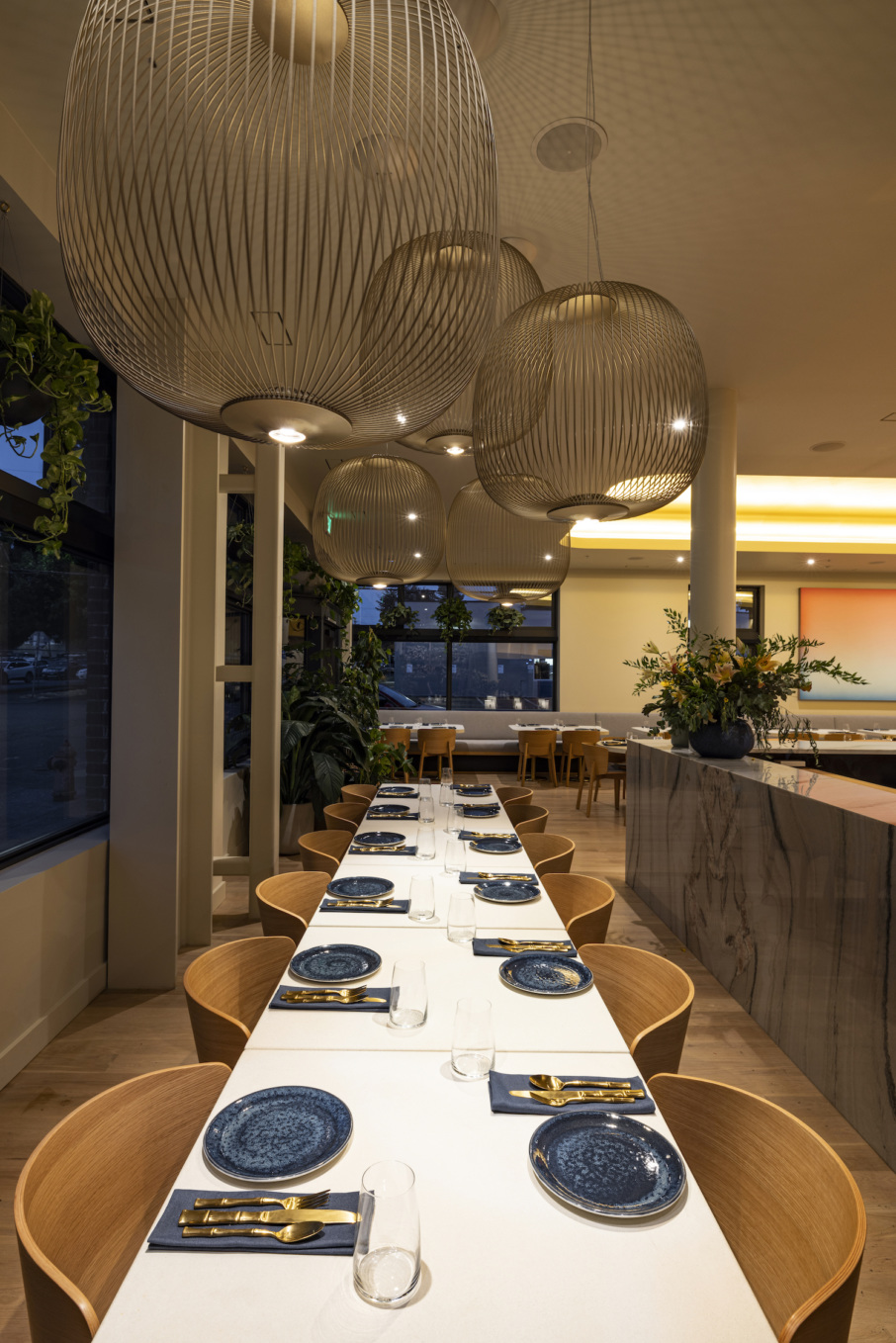

How will the restaurant compare to those Kann pop-ups?
A lot of food is going to be similar, so people can expect really soulful, savory dishes. There are some dishes that were on “Top Chef” that also made it to the pop up that are going to be on the menu like pikliz, which is a spicy Haitian cabbage pickle. Diri ak sos pwa, which is the rice and the bean soup, an iconic Haitian dish. There will be a variation of whole fish.
But the decor is a bit different. We’re going with a clean palette. I wanted to take advantage of the natural light in our building. We have a lot of white oak and quartzite and concrete, which is really soft and beautiful. There are some brushed gold accents, just to give this sense of elevation. And then the food itself is so dynamic and layered. I think the texture and the warmth comes from the food itself.
We are a wood-fire restaurant, so the hearth is a really big part of what we’re doing. But there’s definitely a section of the menu that will focus on traditional Haitian dishes. A lot of the sides are very traditional, like the Haitian vegetable stew called legim, which is one of my favorite dishes. It’s a very rustic stew of eggplant, cabbage, carrots, habanero, thyme, and epis, which is a Haitian seasoning. It’s all cooked down to this brownish, beautiful, golden deliciousness. It also happens to be vegan. We’re very inclusive in terms of dietary distinctions.
Tell me more about that. How will you work your personal culinary philosophy, which generally eschews highly processed ingredients and favors plants, into the menu?
The restaurant will be entirely gluten free and dairy free. There are a lot of people with dietary distinctions in Portland, Oregon and I’ve made a name for myself in terms of being able to feed different types of diets. I wanted wherever I worked to be a place where people who have different dietary distinctions feel very comfortable eating.
I think it’s great that you frame it as an inclusivity thing rather than a restriction or a burden. What else do you want people to take away from their meal at Kann?
I want people to walk away with a good understanding of what Haitian cuisine is, because a lot of people have not had Haitian food. I really want to present a collection of Haitian dishes in a very traditional format so people have a clear understanding of Haitian flavors and some traditional Haitian ingredients.
The other side of this is really honoring bounty and the seasons. So even if it’s something like black cod, something that is sustainable, it grows in the Pacific Northwest, if I marinade it in epis, Haitian green seasoning, that is incorporating a Haitian preparation, so there’s a through line within the food that’s served.
I love that the kitchen is half of the space and the dining room is half of the space. Symbolically, that really helps promote a culture of being in this together.
Portland is perhaps not the obvious home for a modern Haitian restaurant. How does Kann fit? What does it bring?
Portland has always been a place for a unique expression. I’ve been very critical about our city and its lack of diversity, but that’s just a statistic. Statistically, Portland’s one of the whitest metropolitan areas and cities in the country. But there’s quite a bit of diversity within our culinary scene, and that’s what has kept me here, aside from the natural resources. So, if you look below the surface, it’s not surprising that maybe a premier American Haitian restaurant is going to be nestled in Portland, Oregon.
And as we try to reclaim ourselves as a dining destination, I’m also excited to have Kann be a vehicle for all the fruits of our fishermen, farmers, and ranchers and everyone who harvests for us. We’re part of this great ecosystem where we can take all these beautiful resources and put our spin on them.
Clearly, the last few years have been turbulent for the restaurant industry. The pandemic is mostly to blame, but I remember reading about a very tense time in Portland, it was the first pandemic summer, when a group of restaurant workers were vocally demanding more transparency and accountability. How did that shape your approach to things at Kann?
In light of everything that we’ve seen happen in our industry, and all the conversations that we’ve had over the past two and a half years, online and offline, I think it’s obvious that a lot of changes needs to made. I want to do my part to be a part of that change. We’ve tried to make sure that our staff is diverse. It’s very well represented in our management team. I’m committed to having women in positions of leadership. I think that’s extremely important when we talk about equity, to even the playing field.
That’s one of the things that I heard loud and clear over the past couple years. To make sure that everyone on the team, no matter their gender, really does feel that there’s room for advancement, that there is no glass ceiling. The entire kitchen management team is all female, people of color, and queer. They were not at all hired because of those qualifiers; they were hired because they’re the best people for the position. But we took our time, we sought out the best candidates.
We can hope to achieve all these goals, but instead of being super vocal about all these things, I just want to do the work and have the work show for itself. So that’s my big test. Can we accomplish all of the equitable goals that we are trying to achieve with this restaurant?
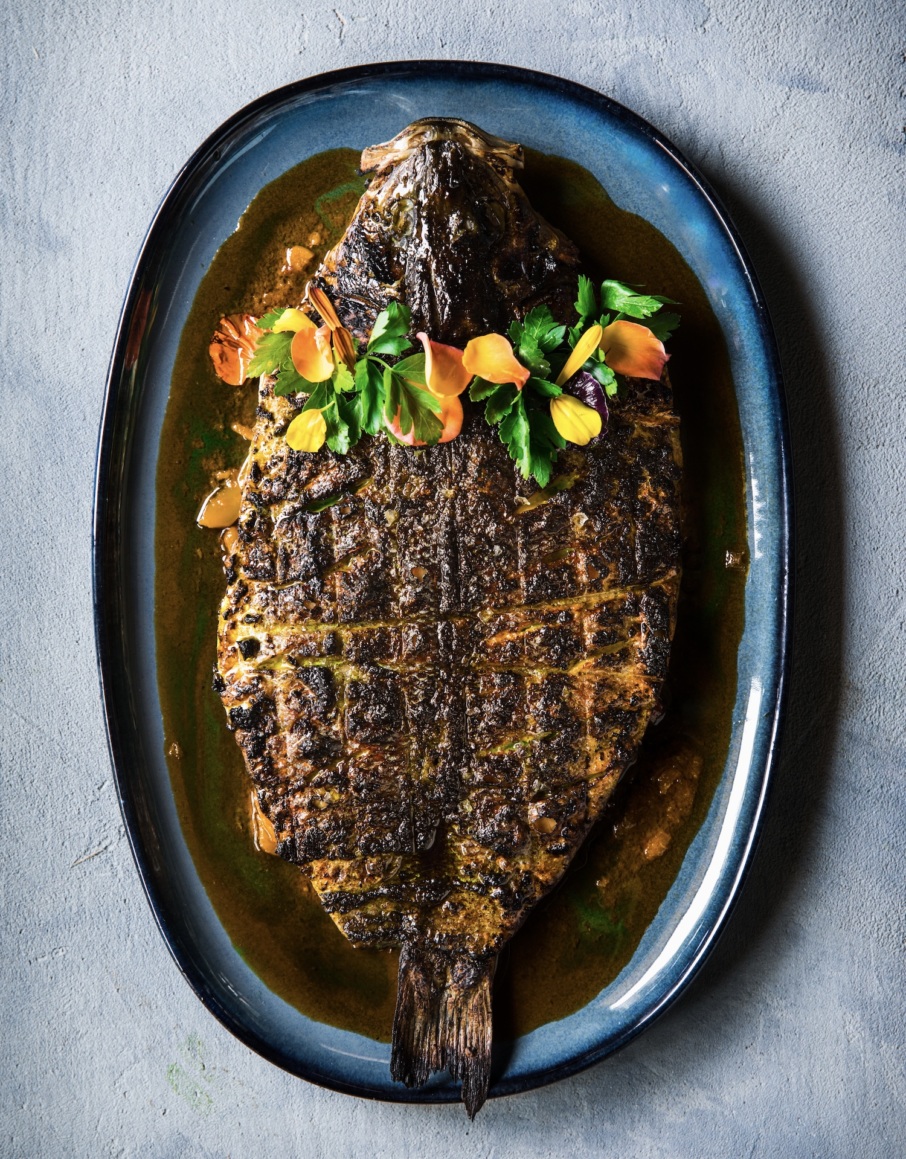
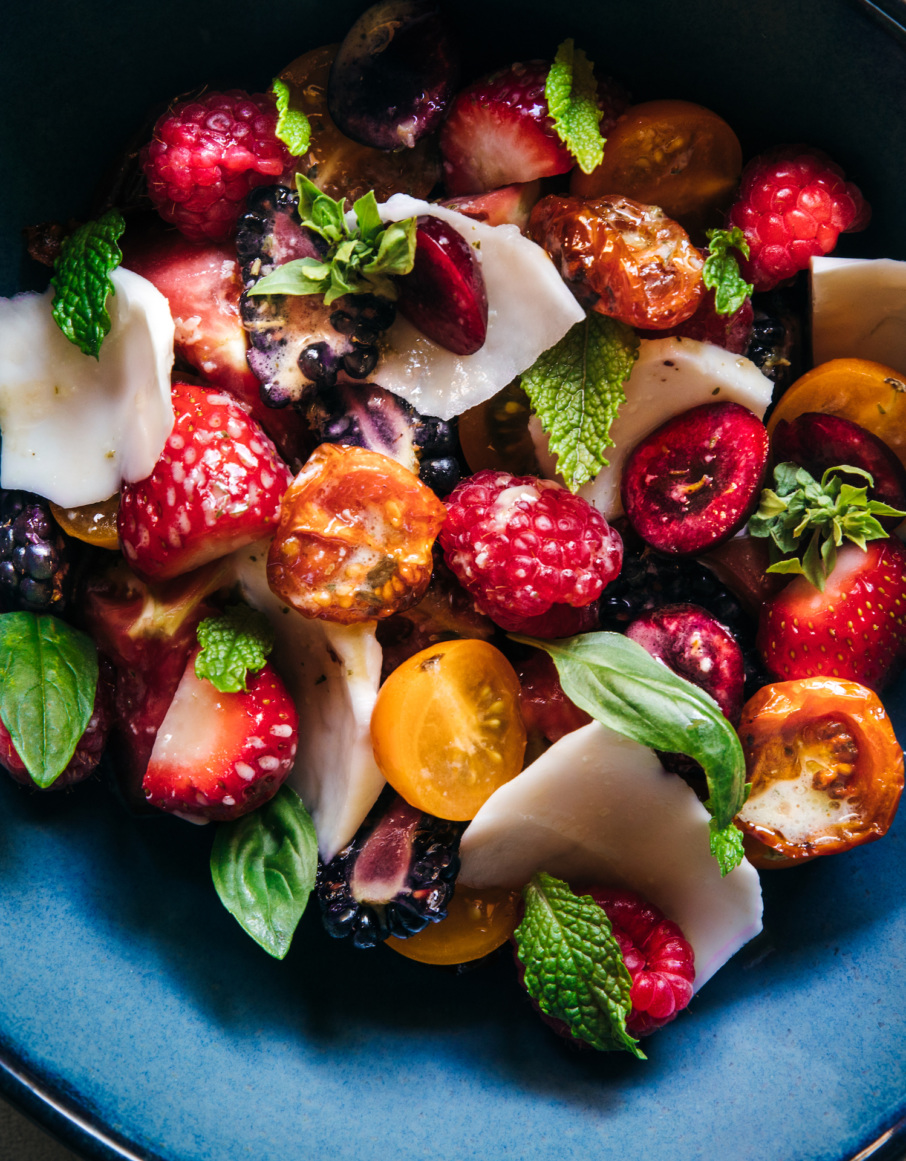
What else goes into that effort? In addition to diversity and unprecedented in to leadership positions, what else are you taking into consideration?
I’ve been asking everyone in their interview process what work-life balance means to them. I know that it’s different for everybody and we need to respect that. I have to respect their boundaries. Burnout is something that we have to be very cautious of. The reality is that a restaurant shift is really about 12 hours. But how many of these a week can we work? How do we get people to come back to the industry? How do we get a new, younger generation excited about working in an industry that has failed a lot of people? There’s quite a bit of work to do.
I’ve had really tremendous mentors in my life and I want people to get that same experience from me. I think it’s an injustice if I don’t offer people the same mentorship.
Paying it forward.
Yeah, because as chefs, we’ve been put on this pedestal for so long. We’re given so many opportunities. And for me, with any opportunity that comes my way, I see it as an opportunity to elevate my team, to lift up my team. Because it’s not just about me. I have a huge team behind me that is truly integral to every piece of what happens. My chef de cuisine is Varanya Geyoonsawat, she’s a tremendous person. We worked together at my last job in Portland, and she’s been with me this is this entire time. We can literally finish each other’s sentences and dishes, and that type of relationship definitely takes time.
Will guests be able to see this synergy in action? Will they get to see you cooking?
The first thing you’ll notice when you walk into Kann is that everyone can see everyone. Nothing is hidden, there are no walls. There’s a clear view of the kitchen so we are very much on display.
You’re giving people what they want!
I also love that the kitchen is half of the space and the dining room is half of the space. Symbolically, that really helps promote a culture of being in this together. From the host to the bartender to the pastry cook, to our regulars to the VIPs, everyone’s in it together.
You’ve also talked about experimenting with more equitable pay structures. Do you think it’s possible to pay workers more while keeping your business afloat?
There are ways to do it. Some people have implemented service charges, which allows them to pay staff a higher wage. There are systems where tips are being split more equitably among all team members, which is a system we’re working with. But part of it is helping guests understand what it takes to run a restaurant. And if we’re offering insurance and vacation, basic elements that we struggle to have in the food and beverage industry, we have to help guests understand the true cost of things. So, our ticket prices may reflect that.
Is everyone getting the same menu or will you have a tasting counter setup?
There’s a chef’s counter, but everyone has the same menu. It’s all a la carte and meant to be shared. Our goal is to change the menu four times a year. We’ll tie it in with the seasons and introduce new Haitian ingredients and techniques as they’re picked up by the team.
You’ve put so much into this opening. What is the legacy you want to leave behind?
For me, it’s extremely important to bring Haitian cuisine into the spotlight. Part of it is helping redirect the stories we tell about Haiti. Haiti has not often been portrayed in the most positive light in national media, but for me, all my memories of Haiti are really beautiful. Of family, laughter, and celebration. And delicious food. Growing up in Queens, having family around me, that is a huge part of it, too. As is my love of local, seasonal ingredients. Kann is really my love letter to all of that.
Mahira Rivers is a restaurant critic and writer based in New York, and Resy’s New York columnist. In addition to spending five years as an anonymous inspector for The Michelin Guides, her writing has been published in The New York Times, New York Magazine, Food & Wine, GQ and elsewhere, and recognized by the James Beard Foundation. Follow her on Twitter and Instagram. Follow Resy, too.


